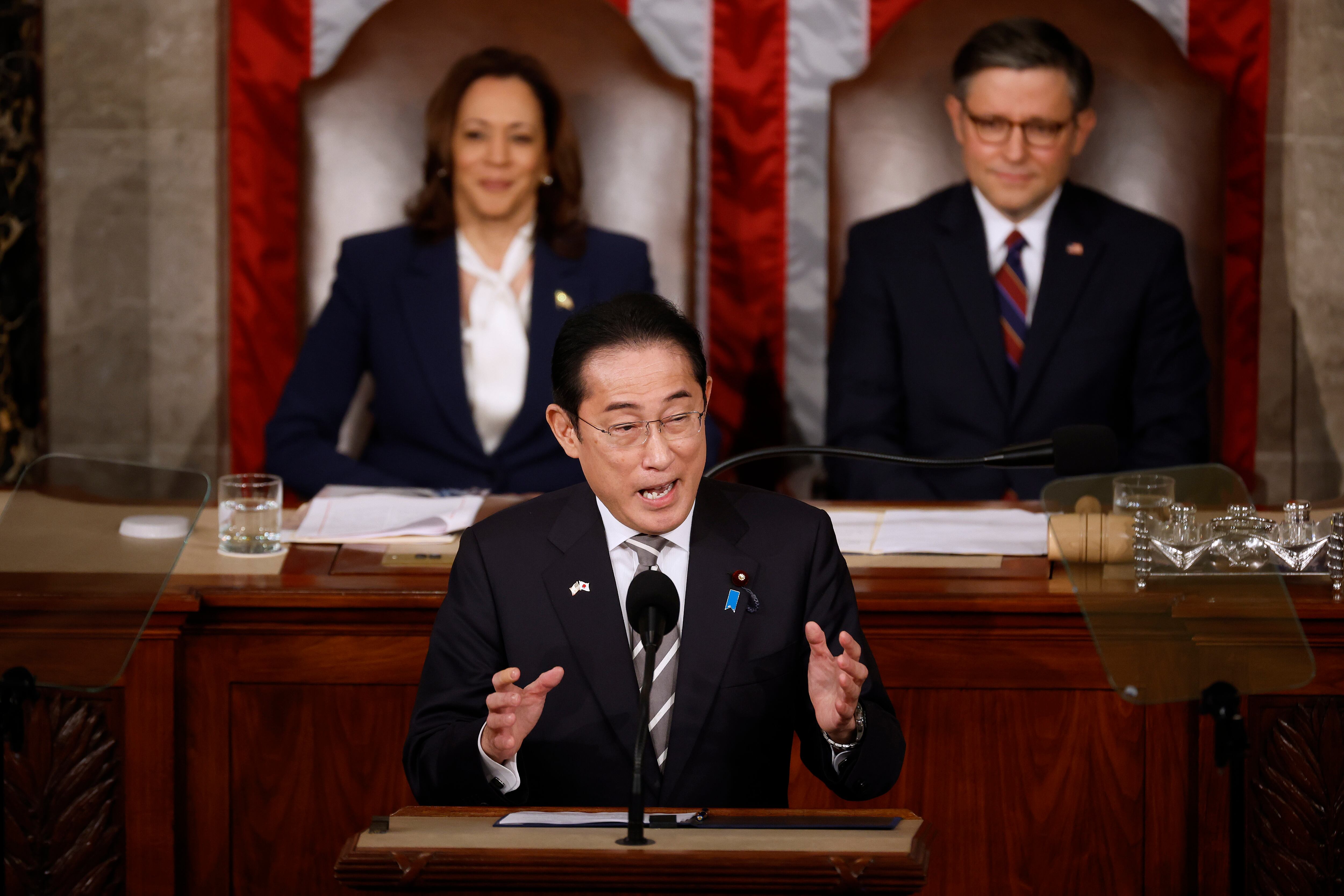In the early 1980s, Ambassador Mike Mansfield first said the U.S.-Japan relationship is the most important bilateral relationship in the world, “bar none.” It became the most iconic statement in the history of our ties with Japan.
When Mansfield framed the alliance as indispensable, the Cold War was still hot and many Americans actually viewed Japan as a serious challenge if not a threat to our economic security.
RELATED

Tensions were running high. Friction over trade extended from textiles, steel, automobiles, and semiconductors to agricultural and sports products. Tokyo’s negotiators famously asserted that Japan’s snow was different in an effort to keep U.S.-made skis out (It turns out they were right about the snow.). The U.S.-Japan Fighter Support Experimental (FSX) project unraveled due to political controversies over technology transfer and techno-nationalism.
Overall, there was fear and concern that the U.S. would lose jobs and competitiveness to what was perceived as Japan’s industrial juggernaut. Honda motorcycles were dropped from cranes to loud applause, and Toshiba radios were sledgehammered on Capitol Hill. Some Americans recoiled when Japanese investors purchased Pebble Beach and Rockefeller Center.
Four decades later much has changed, but with Washington and Beijing locked in a new era of tension, Mansfield’s sentiment may be more apt now than it was even back then. Japan is no longer seen as a threat but as a vital partner. This presents us with a crucial opportunity to make the most of this alliance’s unprecedented assets.
The alliance in 2024 has more untapped potential than ever before. The Biden and Kishida administrations have committed to a comprehensive acceleration of the alliance’s diplomatic, military, and economic roles and missions to more effectively address current and future challenges. It is important to not under aim in this effort.
The U.S.-Japan relationship could accomplish much more for the world than any other. We are limited only by the scope of our vision to take bold, tangible action. The moment has arrived to move from the potential of “could do” to the actionable “can do,” and to mutually recognize the relevance of “must do.”
We need to push ourselves to think and act bigger, by harnessing the enormous innovation we bring together, and by leveraging collaboration. We can start at home. Japan is aging at the most rapid pace ever seen. It is not uncommon to see octogenarian children caring for 100+ year-old parents. Soon well more than 100,000 citizens will have lived more than a century, it will be nearly one million by 2050. We should launch a major new trade initiative that more fully matches the power of U.S. innovation with Japan’s well-aging market.
The U.S. is facing an aging infrastructure crisis. Across our country roads, bridges, rail systems, airports, power grids, and telecommunication networks are all in need of significant investment and improvement. We should partner with Japan on a renewal program in America that makes the most of Japan’s big-project engineering, creativity, and technology prowess.
Defense innovation
The U.S. and Japan together have all of the elements necessary to set the pace on leading-edge strategic and defense technology innovation. This spans co-development, co-production and delivery of critical emerging technologies across terrestrial, maritime, informational, and space security domains. Bilateral public-private R&D and innovation partnership could kick-start a myriad of spin-on and spin-off opportunities in artificial intelligence, autonomous and quantum technologies, energy, and semiconductor development to name but a few.
These initiatives need not be limited to our own borders. This alliance is ready for a global roadshow. It is much larger than just the regional Indo-Pacific, with an unmatched capacity to leverage soft, hard, and smart power. Nine years ago, Prime Minister Abe stood in front of our Congress and said, “Ladies and gentlemen, the finest asset the U.S. has to give to the world was hope, is hope, will be, and must always be hope…let us call the U.S.-Japan alliance, an alliance of hope.” Abe was right to offer this clarion call to action. In Europe, the Middle East, Africa, and South America, our two nations can indeed offer a better deal, one which delivers peace and prosperity in a global context.
We bring synchronous assets to the table. Much of the U.S.’s strength in surging forward is rooted in our short, intense history as a nation and thirst to dare, to push beyond the limits of legacy. Conversely, Japan’s deep capacity for scaling solutions is largely enabled by thoughtful reflections from its long history, seemingly unlimited discipline, and respect for tradition. These opposite poles define us and have drawn our peoples together in mutual admiration for nearly a century. We are more than the sum of these parts. Our shared challenge now is to act like it.
Paul Linehan is a former U.S. Defense Department official and Mansfield Foundation Fellow.
Andrew M Saidel is President & CEO of Dynamic Strategies Asia, LLC.





